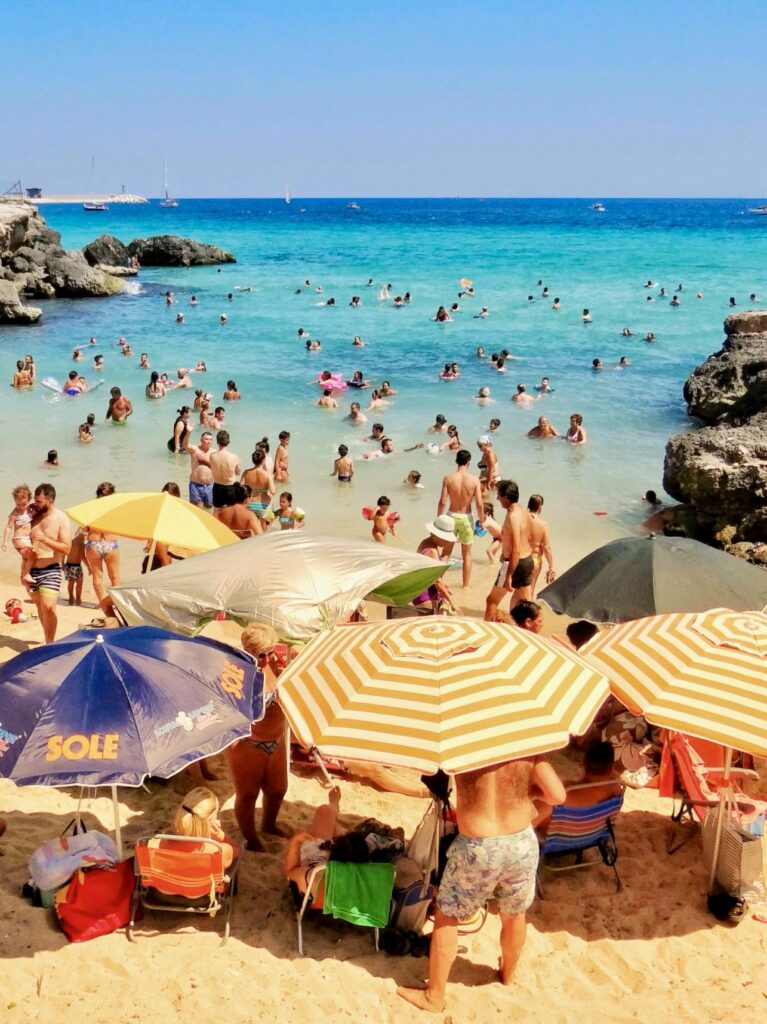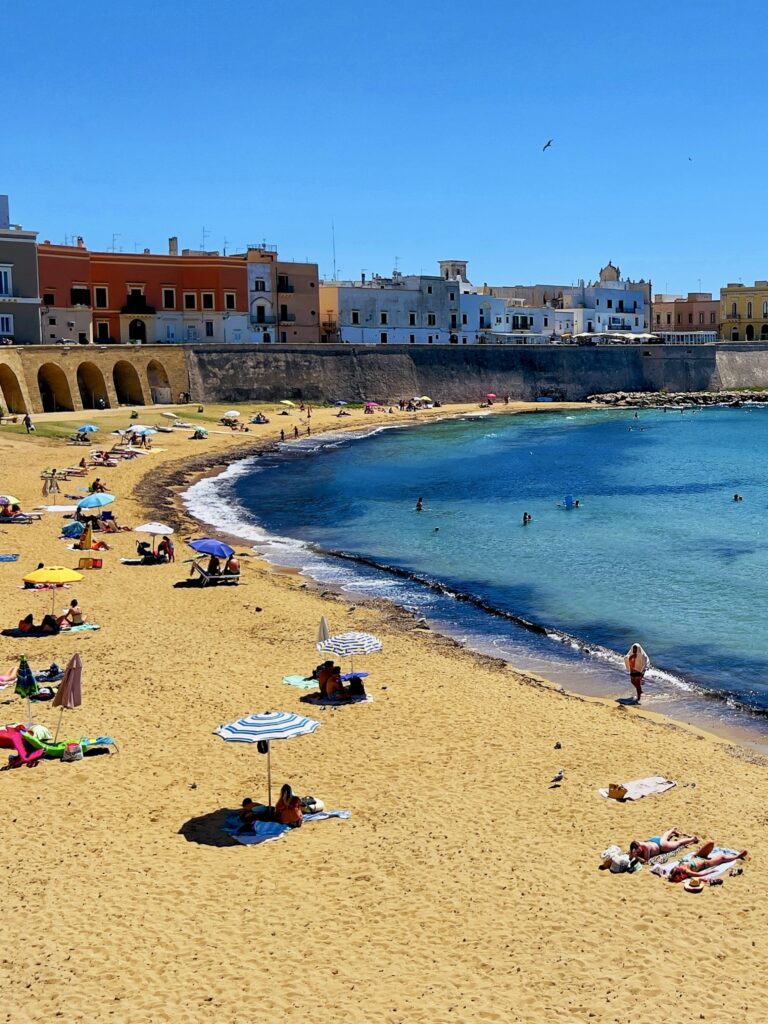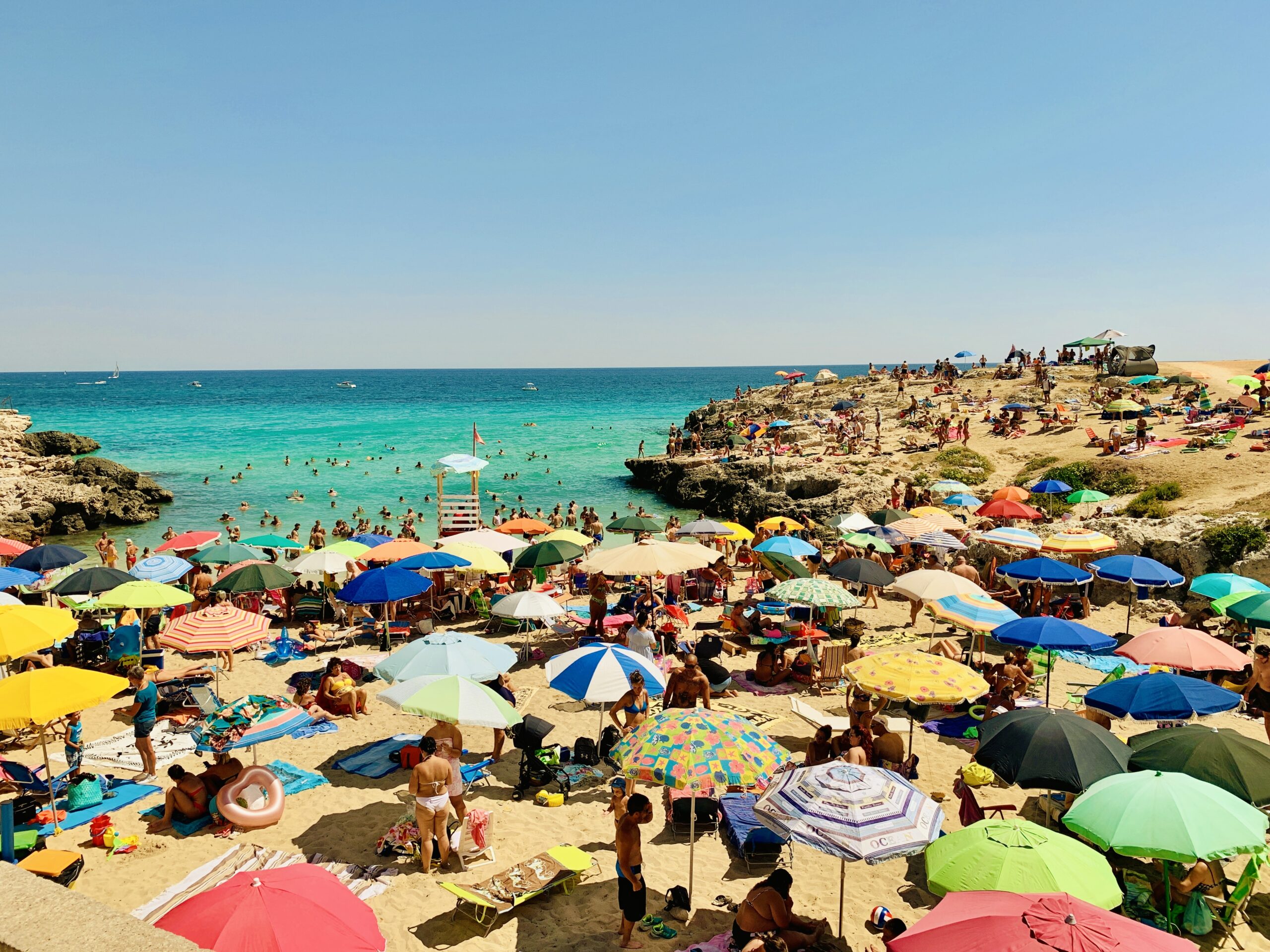When Is the Best Time to Visit Puglia?
Puglia may be known for its postcard-perfect beaches, whitewashed towns, and olive grove-studded landscapes, but choosing the right time to visit is key to getting the best from Italy’s heel. While each season has its charm, your experience of the region can vary dramatically depending on when you come. Here’s a detailed breakdown of what to expect – from weather and crowd levels to local life and activities – so you can decide the best time to visit Puglia.
We live in Puglia all year round and provide practical tips on getting around, cultural insights and unique local experiences. Follow us on Instagram for frequent video stories, reels, photos, ideas and other information to inspire your stay in Puglia.
Why Winter Is Never the Best Time To Visit Puglia
Winter in Puglia (November–March): Quiet, Damp, and Chill to the Bone Cold
The off-season in Puglia begins in earnest around the start of November and lingers until Easter. While the idea of a Southern Italian winter might sound appealing, the reality is often colder than expected.
Yes, temperatures rarely plunge below freezing in Ostuni and other parts of central Puglia, with average daily highs in the winter months hovering around 10–13°C (50–55°F). But humidity is the region’s silent saboteur. The damp cold, especially in stone-built towns like Ostuni, seeps into your bones. “Feels like” temperatures can dip well below what the thermometer reads, particularly on overcast, windy days. Rain is common too: this is the wettest part of the year, with some months seeing 10–12 days of rainfall.
We do not generally recommend Puglia as a destination between November and March. January is the bleakest point of the season. In February, the sun occasionally breaks through and it’s possible to eat al fresco – but only when it shines, and the days are short. Without the sun, February remains cold, damp, and grey.
During these months, much of Puglia retreats into hibernation. Towns that buzz in summer – like Polignano a Mare or Gallipoli, and even Ostuni – can feel ghostly and shuttered. Bars, restaurants and shops that cater to tourists tend to close until spring.
Exceptions are larger cities like Bari and Lecce (and even Monopoli), which remain lively and welcoming all year round. Bari Vecchia, the old town, is still very much lived in by families who have been there for generations. That means the bakers, butchers, salami and pasta shops, grocers, and fantastic bars and trattorie all remain open, keeping the quarter lively year-round. Bari also serves as Puglia’s main public transport hub, making day trips possible even in winter. Bari’s Christmas street lights add a cosy magic to its old town, and there are few better winter pleasures than walking into a warm, scent-filled trattoria in Bari Vecchia for a bowl of ragu di braciole.
Monopoli’s old town still has an offering at this time of year, and Locorotondo celebrates Christmas big-time with festive decorations across the town, making it a winter highlight.
Elsewhere interest comes from festive illuminations, and traditional presepe (Nativity scenes) displayed in churches and streets.
Spring in Puglia (April–June): Warming Up Nicely
The best time to visit Puglia?
Spring is certainly one of the most pleasant times to visit Puglia. By April, the days start to lengthen a little, and the countryside bursts into colour with wildflowers and almond blossoms. May and June are particularly lovely—dry, sunny, and warm without being oppressively hot. Expect temperatures in Ostuni to range from 18°C in early May to 28°C by the end of June (as we write this we are experiencing highs of 33°C in the shade). Humidity is low, and sea breezes keep coastal areas comfortable.
The sea starts to become swimmable by mid-May and is usually pleasant by June. Importantly, these months are also relatively crowd-free. You’ll find most towns beginning to open up again, but without the crush of peak-season tourism. Restaurants, beach clubs, and shops are welcoming visitors, but there’s still space to breathe and enjoy.
The best time to visit Puglia for: Active holidays (walking, cycling), photography, relaxed beach days, and local festivals starting to reappear.
Summer in Puglia (July–August): Hot, Busy, and Buzzing
If your idea of a holiday includes buzzing beaches, warm Mediterranean nights, and the energy of summer crowds, July and August are for you. But be prepared: Puglia gets hot. Temperatures in Ostuni regularly top 30–34°C, with the mercury rising higher in inland areas.
These are also the busiest months of the year. In August alone, more than 800,000 Italian tourists head to Puglia, making it Italy’s top staycation destination. The coastline, from Gargano in the north to Salento in the south, is busy, and city beaches in Monopoli and Otranto will be packed (Gallipoli’s city beaches fare a little better – we think because most visitors head to the beaches and lidos at Baia Verde and beyond). Accommodation prices soar, restaurant reservations are a must, and beaches fill up early.


But there’s an undeniable energy in the air. Towns come alive with festivals, sagre (food fairs), and late-night passeggiate. If you don’t mind the crowds, or can escape to lesser-known inland areas or uncrowded beaches, you’ll find this season full of colour and life.
The best time to visit Puglia for: Beach holidays, nightlife, festivals, and people-watching.
Autumn in Puglia (September–October): Warm Seas and Golden Light
Just as the summer crowds begin to depart, September and October bring a welcome sense of calm. The sea remains deliciously warm – thanks to the heat it’s absorbed over the summer – and many days still reach 25–28°C, especially in early September. October sees a gradual cooling, with highs around 20–23°C, and more variable weather later in the month.
These are ideal months for relaxed travel: restaurants and bars are still open, beach days are still possible, and prices begin to dip. There’s also a mellow, golden quality to the light, especially in olive-growing regions. Local grape and olive harvests begin, and food festivals return in earnest.
The best time to visit Puglia for: Swimming without crowds, food lovers, couples, and relaxed road trips.
So, When Should You Go?
- For beach holidays: June or September—warm sea, fewer crowds.
- For local life and food: May, September, or around Christmas in Bari or Lecce.
- To avoid tourists entirely: November to March—just bring a coat and manage expectations.
- For vibrant Puglian summer magic: July and August, if you can handle the heat and crowds.
There’s no bad time to visit Puglia—but knowing what to expect can help make your trip exactly what you want it to be. Whether you come for the still-warm waters of October, the blooming countryside of May, or the cosy trattorias of a December evening, Puglia always offers something… just not always to everyone, at the same time.


I just wanted to say thank you for your super helpful podcast — I’m planning a two-week trip to Puglia this December with my mother, and your tips have been a great resource. I was wondering if you have a Masseria you’d recommend for a cozy and festive New Year’s celebration in Valle d’Itria. Would love your insight!
Ciao Jacqueline
Have you seen our Masseria guide? You also have to factor in getting to and from if you are planning to see some of the region – fine if you have your own transport. At this time of year where most Puglia is in relative hibernation away from the main cities, and to a lesser extent Monopoli, a city break in Bari or Lecce might be more interesting. Your choice of masserie open during this period might be a little more limited. Wrap up warm.
Buon viaggio, Gianmarco.
Hello
Are there any local guides you would recommend for people staying near Ostuni who could take us around the region
Ciao – details here in the section Puglia by tour guide. However Pietro does small group tours and is usually booked well ahead, in which case ask your host or at the hotel you are staying. They should have recommendations. All our recommendations come from personal experience, and we don’t often have need for a tour guide ourselves!
Buone vacanze
LuigiM.